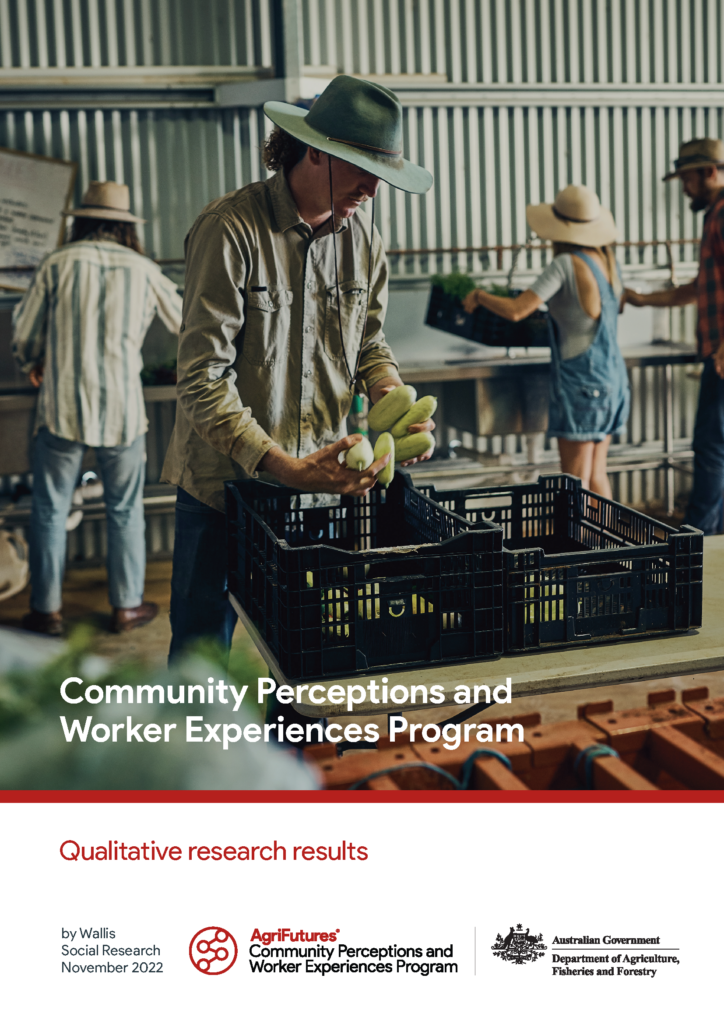Understanding the challenges and opportunities facing the Australian agriculture, fisheries and forestry sectors is the first step towards designing interventions that reduce barriers to entry and improve retention of workers.
The focus of this work was delivering key insights into community and worker perceptions of working in the agriculture, fisheries and forestry sectors, and the real-world experiences of those workers. Further, the report investigates the impact these perceptions and experiences have on workforce attraction and retention.
Through this research, the Australian community and jobseekers will better understand the realities of the sectors in the 21st century and the work opportunities that agriculture, fisheries and forestry offer. Additionally, they will realise the attitudinal and structural barriers to working in agriculture, and the ‘pull factors’ that make the sectors a more attractive employment option.
For industry and government, the research will help them better understand community perceptions and the lived experiences of workers, and develop interventions that support the agriculture workforce.
Key findings include that agriculture is highly appreciated as an industry by the general population, however is often narrowly defined as farming. Perceptions of forestry are less positive, a consequence of low knowledge and awareness of the industry’s practices. Fisheries mostly has positive associations, while the perception that aquaculture contributes to sustainable seafood production contrasts with the belief farms are susceptible to viruses and disease.
Worker experiences in the sectors are overwhelmingly positive. Highlights for those in on-farm roles are that work is hands-on and team-oriented, and that training early in their careers was high quality and conducive to meaningful and fast learning. Highlights for those in off-farm roles centre on the availability of hybrid working environments, where although most of their time is spent in an office, the results of actions taken by them can be seen tangibly on-farm.
The qualitative findings presented here form part of the Community Perceptions and Worker Experiences Program and build on the broader statistical picture painted by complementary quantitative research. The Program is one component of the AgATTRACT initiative and contributes to the achievement of the Human Capital tranche of measures responding to the National Agricultural Workforce Strategy: Learning to excel in the Agriculture 2030 package. The program was funded by the Department of Agriculture, Fisheries and Forestry.





